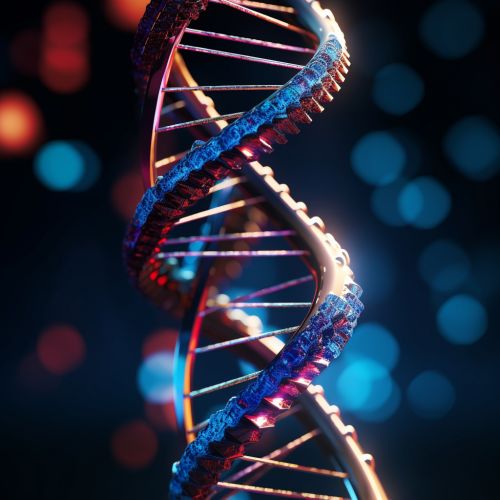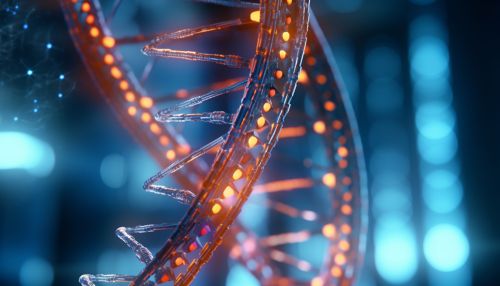TATA box
Overview
The TATA box is a DNA sequence that is found in the promoter region of genes in archaea and eukaryotes. It is named after its conserved DNA sequence of 'TATAAA', which is typically located 25-30 base pairs upstream of the transcription start site. The TATA box is recognized and bound by the TATA-binding protein (TBP) and TBP-associated factors (TAFs), which are components of the transcription factor II D (TFIID) complex. This binding event is one of the initial steps in the formation of the transcription preinitiation complex, which is necessary for the transcription of DNA into RNA.


Function
The TATA box plays a crucial role in the initiation of transcription, the process by which the genetic information stored in DNA is copied into RNA. The TATA box serves as a core promoter element, which is a region of DNA that initiates the assembly of the transcription machinery. The TATA box is recognized and bound by the TBP, a subunit of the TFIID complex. The binding of TBP to the TATA box causes a significant distortion in the DNA structure, which facilitates the recruitment of other components of the transcription machinery, including RNA polymerase II (Pol II). This assembly of proteins forms the transcription preinitiation complex, which is necessary for the initiation of transcription.
Structure and Binding
The TATA box is a short DNA sequence that consists of the conserved sequence 'TATAAA'. This sequence is usually located 25-30 base pairs upstream of the transcription start site. The TATA box is recognized and bound by the TBP, a subunit of the TFIID complex. The TBP is a highly conserved protein that has a saddle-like structure, which allows it to bind to the minor groove of the DNA helix and induce a sharp bend in the DNA. This distortion in the DNA structure is thought to facilitate the recruitment of other components of the transcription machinery.
Variations
While the consensus sequence of the TATA box is 'TATAAA', variations of this sequence are also found in many genes. These variations can affect the binding affinity of TBP and the efficiency of transcription initiation. For example, substitutions in the TATA box sequence can result in a weaker binding of TBP, which can lead to a decrease in transcription activity. On the other hand, some variations can enhance the binding of TBP and increase transcription activity. Therefore, the sequence of the TATA box can have a significant impact on gene expression.
Evolution
The TATA box is a highly conserved DNA sequence that is found in the promoter region of genes in archaea and eukaryotes. The presence of the TATA box in these diverse groups of organisms suggests that it has been preserved throughout evolution due to its essential role in transcription initiation. The TBP, which binds to the TATA box, is also highly conserved, further indicating the importance of this interaction in the regulation of gene expression.
Role in Disease
Alterations in the TATA box sequence can lead to dysregulation of gene expression, which can contribute to the development of diseases. For example, mutations in the TATA box of the beta-globin gene have been associated with beta-thalassemia, a blood disorder characterized by reduced production of hemoglobin. Similarly, mutations in the TATA box of the tyrosinase gene have been linked to oculocutaneous albinism, a condition characterized by a lack of pigmentation in the skin, hair, and eyes. Therefore, the TATA box plays a critical role in maintaining normal physiological functions and its dysregulation can lead to disease.
